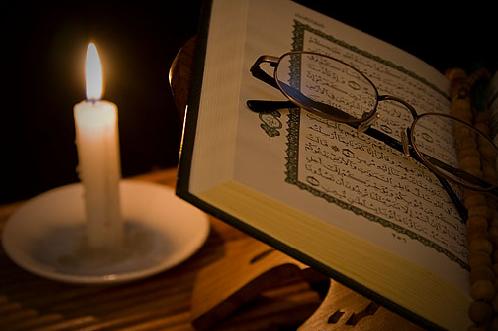This is an extract from the book “Al Jaami’u li Ahkaam is Siyaam” (A complete guide to the rules of fasting) by Sheikh Abu Iyaas Mahmood bin Abdul-Lateef bin Mahmood (‘Uwaydhah). Please note this is a draft translation from Arabic. If any confusion arises from the translation then please refer to the original Arabic book.
It is recommended for the Muslim that after he has finished the fasting of Ramadhaan and broken his fast for Eid al-Fitr to resume fasting again in Shawaal. He fasts six days from it and whoever does that every year then it is equal to fasting the Saum of Ad-Dahr (continuous).
This is because the Hasanah is multiplied by ten and one day is like ten days. Ramadhaan is equal to ten months and six days is equal to sixty days (two months) therefore the fasting of Ramadhaan and the six days of Shawaal are equal to the fasting of twelve months which is an entire year.
It is not obligatory to fast these days as soon as Eid has passed just as it is not obligatory to fast them as a continuous block. All that has been confirmed is that six days from the month of Shawaal are required meaning any six from the month as a whole. The following are a collection of Ahaadeeth that deal with this issue:
1) Abu Ayub Al-Ansaari (ra) said that the Messenger of Allah ﷺ said: “Whoever fasts Ramadhaan and then follows that with six from Shawaal it is like he has prayed Siyaam Ad-Dahr (the continuous fast)”.
Muslim (2758), Abu Daawud, Ahmad, At-Tirmidhi, Ibn Maajah, Ibn Hibbaan and Ad-Daarami. Al-Bazzaar (1060) narrated it from Abu Hurairah (ra).
2) Thawbaan said that the Messenger of Allah ﷺ said: “The fasting of Ramadhaan is equal to ten months and six from Shawaal equal two months so together they are equal to a year of fasting”.
An-Nasaa’i (2873) in As-Sunan Al-Kubraa. Ibn Maajah, Ahmad, Ad-Daarami, Ibn Hibbaan and Al-Bayhaqi narrated it.
The Lafzh of Ibn Maajah (1715) is: “Whoever fasts six days after Eid ul-Fitr has completed the year, whoever performs a Hasanah will get ten times its worth”. Its chain is Saheeh.
The meanings of these narrations are completely clear and Ash-Shaafi’, Ahmad and Daawud view the fasting of six days in the month of Shawaal as Mustahabb (recommended). This has also been reported from Ash-Sha’bi and Maymoon Bin Mahraan.
In contrast Abu Haneefah and Maalik have viewed the fasting of these six days to be Makrooh (disliked). In Al-Muwatta’ the following is stated:
“Verily he – Imaam Maalik – did not see anyone from amongst the people of knowledge and fiqh fasting it. It did not reach me from any of the Salaf (predecessors) and that the people of knowledge dislike it and fear its innovation (bid’a). To attach something to Ramadhaan which is not part of it is from the people of ignorance. If there had been a Ruksha with the people of knowledge you would have seen them doing it.”
I find the view that fasting six days from Shawaal is disliked held by the two Imaams Abu Haneefah and Maalik surprising due to the strikingly clear texts that make its performance recommended. As for the views of Maalik regarding that he had not seen the people of knowledge performing it and that maybe people of ignorance had attached it to Ramadhaan and what both Abu Haneefah and Maalik viewed about it being disliked and that maybe people thought that it was obligatory. All of these statements and views are in opposition to the texts and therefore no attention can be given to them. This argument is weak and easy to repel and therefore does not require further time. May Allah forgive these two great Imaams.

